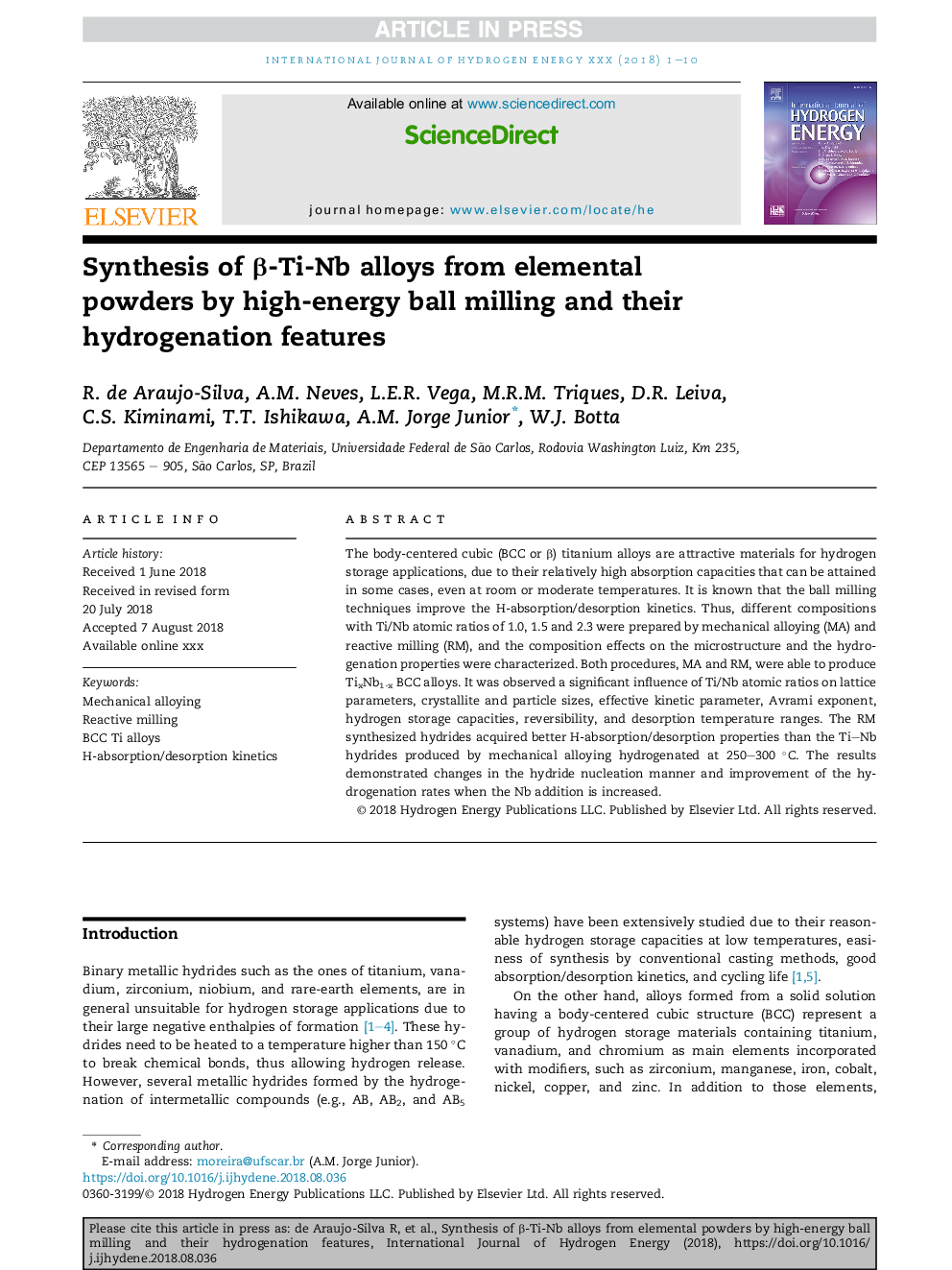| Article ID | Journal | Published Year | Pages | File Type |
|---|---|---|---|---|
| 10154649 | International Journal of Hydrogen Energy | 2018 | 10 Pages |
Abstract
The body-centered cubic (BCC or β) titanium alloys are attractive materials for hydrogen storage applications, due to their relatively high absorption capacities that can be attained in some cases, even at room or moderate temperatures. It is known that the ball milling techniques improve the H-absorption/desorption kinetics. Thus, different compositions with Ti/Nb atomic ratios of 1.0, 1.5 and 2.3 were prepared by mechanical alloying (MA) and reactive milling (RM), and the composition effects on the microstructure and the hydrogenation properties were characterized. Both procedures, MA and RM, were able to produce TixNb1-x BCC alloys. It was observed a significant influence of Ti/Nb atomic ratios on lattice parameters, crystallite and particle sizes, effective kinetic parameter, Avrami exponent, hydrogen storage capacities, reversibility, and desorption temperature ranges. The RM synthesized hydrides acquired better H-absorption/desorption properties than the TiNb hydrides produced by mechanical alloying hydrogenated at 250-300 °C. The results demonstrated changes in the hydride nucleation manner and improvement of the hydrogenation rates when the Nb addition is increased.
Keywords
Related Topics
Physical Sciences and Engineering
Chemistry
Electrochemistry
Authors
R. de Araujo-Silva, A.M. Neves, L.E.R. Vega, M.R.M. Triques, D.R. Leiva, C.S. Kiminami, T.T. Ishikawa, A.M. Jorge Junior, W.J. Botta,
